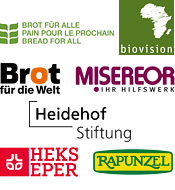News
21.04.2015
Fertile soils key to food security and sustainable development

Healthy soils are the foundation of global food production and ought to become a top priority on the political agenda. This was one of the key messages of the opening pannel at the Global Soil Week, which started in Berlin on Monday. „If humanity’s overarching need for food security and nutrition, climate change mitigation and sustainable development is to be met, soil resources have to be given the global attention they deserve,” said Moujahed Achouri, Director of FAO’s Land and Water Division, in his opening address. However, the level of soil degradation is alarming in many countries. „Every year, 24 billion tonnes of fertile soil is lost: through erosion, development, flooding, mining - or through intensive agriculture,“ says Jes Weigelt of the Institute for Advanced Sustainability Studies (IASS) in Germany, which organises the conference together with partners such as FAO, UNEP or the European Commission. Global Soil Week brings together more than 550 land and soil management experts from 78 countries. Under the slogan „Soil. The Substance of Transformation“, this year’s meeting highlights the importance of land and soil in achieving the UN Sustainable Development Goals (SDGs). These goals, to be adopted by the UN General Assembly in autumn, will succeed the Millennium Development Goals and form the political foundation for sustainable development in both developing and industrialised nations. But a new IASS research paper released on Monday shows that the land demands made in the SDGs exceed the world’s existing land resources. Twelve of the proposed SDGs relate to the sustainable use of natural resources and several depend on the use of additional land resources, e.g. Goal 2 on food security and sustainable agriculture, as well as the goals on energy supply (Goal 7), production and consumption (Goal 12) and the sustainable use of ecosystems (Goal 15). IASS Executive Director Klaus Töpfer concluded: “The 17 SDGs are therefore not consistent. The demands for biomass and land that they make are far more than we can possibly meet. We need to set priorities, for example, where food security is concerned.” According to the publication, consumers play an important role as well. “The choices we make are of great importance: not only our decisions on what to consume, but also our decision to buy food in a way that it does not end up being wasted.” (ab)
16.04.2015
Brazil’s Cancer Institute cautions against massive use of pesticides
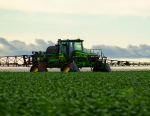
Brazil’s National Cancer Institute (INCA) has called for a substantial reduction in the use of pesticides, blaming the cultivation of genetically modified crops for the skyrocketing use of agrochemicals in the country. The institute, which is under the direct administration of the Ministry of Health, published a document last week, warning against the serious health effects of the massive pesticide use. The statement comes a few days after the World Health Organisation’s cancer research agency announced that glyphosate, the world’s most widely used weed killer, is likely to cause cancer in humans. Brazil is the biggest consumer of pesticides in the world; agrochemical sales reached $8.5 billion in 2011, up from $2 billion in 2001. National pesticide consumption is equivalent to 5.2 litres per person per year. The report describes the cultivation of genetically modified (GM) crops as the main reason for this sad record: “Importantly, the release of transgenic seeds in Brazil was one of the factors responsible for putting the country in first place in the ranking of agrochemical use since the cultivation of these modified seeds requires large quantities of these products.” The INCA points to the risks to human health from exposure to pesticides, particularly its relationship with certain types of cancer. Professor Luiz Felipe Ribeiro Pinto said, “we have to keep in mind that pesticide use sykrocketed over a period of just ten years. If we consider that cancer develops sometimes as long as 20 to 30 years after exposure, the consequences of this rapid increase in pesticide use will be felt in about 15 or 20 years time.” The report explains that acute pesticide poisoning is mainly affecting those directly exposed to chemicals as in the case of farm workers. Possible symptoms can be skin irritations, itching, vomiting, diarrhea or respiratory problems. However, chronic poisoning could also affect large parts of the population due to pesticide residues in food and the environment. Since the effects of chronic exposure such as: infertility, impotence, abortions or cancer, do not appear immediately, it is difficult to link them to the agent. The latest tests of Brazil’s health agency Anivsa revealed pesticide residues above the maximum permissible limit in many samples, as well as the presence of pesticides that are not allowed in the country. According to INCA's statement, the main focus must be on combating the use of pesticides, which contaminate all vital resources, including food, soil, water, breastmilk and air. The INCA therefore calls for a stronger regulation of pesticides and the promotion of agroecological alternatives to the dominant agricultural model with its dangerous dependence on GMOs and pesticides. (ab)
13.04.2015
Report says a sustainable local food revolution is taking over Europe
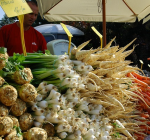
European citizens and small-scale sustainable farms are taking back control of the food system from large industrial businesses; this is the key message of a report released on Monday by Friends of the Earth Europe. According to the authors, the globalisation of food production has led to a monopoly within the agricultural sector, with just a few companies dominating the supply of seeds, pesticides, processing, logistics and food production. In 2011, four retailers controlled 85% of the German food market and three retailers controlled 90% of the food market in Portugal. Many people do not know what they are actually eating: supply chains are long and complex, leaving consumers with no idea about the origins of their food. However, more and more people are beginning to understand the benefits of responsible eating habits. There is a growing trend across Europe of farmers’ markets, on-farm shops or community supported agriculture (CSA) projects, which are creating new alliances between producers and consumers. These different initiatives are expressions of a growing grassroots movement that promotes local food chains, supplying sustainably-farmed, small-scale food – also known as 'agroecological' farming. The report features five case studies which illustrate different ways in which communities are supporting sustainable producers or re-invigorating local economies. In Italy, the Gruppi di Acquisito Solidale movement consists of groups of consumers who purchase collectively and directly from local producers. Over the past ten years, the number of GAS schemes has grown rapidly and it is estimated that there are now 2,000 groups in Italy, with a total annual turnover of €90 million. In northern Spain, three small-scale chicken farmers set up a chicken cooperative, Avicultura Campesina, with their own slaughterhouse, so that they can guarantee the whole production process from farm to table without any intermediaries. Another example are farmers’ markets in the Czech Republic: Since 2009, when the first farmers’ market was held in the Czech capital, the demand for fresh locally-grown produce has continued to increase. Within two years, there were more than 13 farmers’ markets in Prague. According to Jana Spilkovà, an Assistant Professor at Prague’s Charles University, “They illustrate the start of a noticeably new consumer and producer culture, created as concerns about food consumption, ethics, social diversity, and urban renewal come together.” Friends of the Earth Europe calls on policymakers to recognise the benefits of short food supply chains for people and the environment and to support them in multiple policy areas including health, environment, rural development, trade and agriculture. The report concludes: "Locally-produced and affordable agroecological food should be the backbone of a food system that increases our food sovereignty. The ‘business-as-usual’ model can no longer be considered an option for a well-functioning food system in the future.“ (ab)
09.04.2015
Seeds under attack: Farmers stand up for seed sovereignty
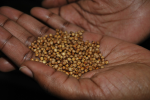
Seed saving, a thousand-year-old practice which forms the basis of farming is fast becoming criminalised. A new report released by GRAIN and La Via Campesina on Wednesday shows how agribusiness and governments are moving to stop farmers from saving and exchanging their seeds and how farmers are fighting new seed laws. According to the booklet, free trade agreements, bilateral investment treaties and regional integration initiatives are hardening ‘soft’ forms of ownership rights over seeds. Under corporate pressure, seed laws and plant variety rights in many countries are being revised to adapt to the new demands of the seed and biotechnology industry, limiting what farmers can do with their seeds and the seeds they buy. These laws are being reinforced by other regulations that are supposed to ensure seed quality, such as regulations related to the health of plants or seed certification. Guy Kastler commented for La Via Campesina that, “control over seeds must remain in peasants' hands”. Over centuries, peasant farmers have created the thousands of varieties of crops that are the basis of the world's food supply and diversified diets. Peasant seeds guarantee the food sovereignty of rural communities and urban populations. GRAIN and La Via Campesina therefore stress the need to replace these new laws with regulations that guarantee the rights of peasants to conserve, use, exchange, use and sell their seeds and protect them from biopiracy. The publication also shows how social movements worldwide, especially peasant farmers organisations, have resisted and successfully mobilised to prevent such laws from being passed. In 2014, after four years of mobilisation, Chilean farmers organisations and social movements won an important victory against an attempt to privatise peasant seeds. In Ghana, students and trade unions have joined small-scale farmers organisations in mobilising against a Plant Breeders’ Rights (PVP) Bill, popularly hailed as the ‘Monsanto Law’. GRAIN and La Via Campesina hope their document will help strengthen resistance worldwide. They say that it is important to block the legislative process, because once the laws are passed, resistance becomes harder and more complex. However, according to the report, “the best way to defend seeds – and to defend the practices of using and sharing that keep seeds alive – is to continue to grow them, look after them, and exchange them, in every locality. Keeping farming systems alive is the best way to keep seeds alive.” (ab)
02.04.2015
U.S. to place restrictions on glyphosate use
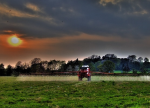
U.S. regulators will put new restrictions on glyphosate, the world’s most widely used herbicide, in an effort to address the rapid expansion of weeds resistant to the chemical. According to Reuters, the Environmental Protection Agency (EPA) confirmed it will require a weed resistance management plan for glyphosate, the key ingredient in Monsanto’s Roundup weed-killer. The EPA has not yet given details but Reuters reports that the measures will include weed monitoring, farmer education and remediation plans. The requirements could be similar to those placed on a new herbicide product developed by Dow Chemical. The company must report to the EPA about cases of weed resistance and inform farmers and other stakeholders about the difficulties of controlling them. The area of U.S. cropland infested with glyphosate-resistant weeds has expanded to 61.2 million acres (24.7 million hectares) in 2012, up from 40.7 million acres in 2011. Not only are glyphosate-resistant weeds expanding geographically; the rate at which they are spreading is gaining momentum, increasing 25% in 2011 and 51% in 2012. These so-called superweeds, such as horseweed and Palmer amaranth, hinder crop production and lead to an increase in herbicide use. According to the U.S. Department of Agriculture (USDA), at least 283.5 million pounds (128,000 tonnes) of glyphosate were used in U.S. agriculture in 2012, up from 110 million pounds (49,000 tonnes) in 2002. USDA says that more than 90% of the soybeans and cotton grown in the United States last year, and 89% of the maize, was genetically modified to withstand herbicide use. The EPA’s announcement comes in the wake of a finding by the World Health Organization’s cancer research unit earlier this month that glyphosate is “probably carcinogenic to humans”, a conclusion based on a review of years of scientific evidence. However, the EPA’s restrictions only focus on the herbicide’s contribution to weed resistance and are not intended to address public health concerns. Last week, several leading non-governmental organisations urged the Obama administration to “weigh heavily” the WHO conclusion. In a letter to the EPA, the organisations called the WHO announcement “extremely timely, as EPA is preparing to issue its preliminary risk assessment of the widely used herbicide“. For the required reevaluation of the herbicide health data will also be taken into account. (ab)
30.03.2015
European Patent Office upholds patents on conventionally-bred plants

The European Patent Office (EPO) has approved the controversial patenting of plants and animals derived from conventional breeding. In a long awaited decision on the precedent cases of broccoli and tomato, the Enlarged Board of Appeal of the EPO in Munich ruled on Wednesday that plants obtained by essentially biological processes are patentable. The EPO made clear that while processes for crossing and selection cannot be patented, plants and animals stemming from these processes can still be granted patent protection. The decision was heavily criticised by the coalition, "No Patents on Seeds!", which is supported by over 300 NGOs and farmers’ organisations worldwide. The organisations described the ruling as “illogical” and warned against an increasing monopolisation of the breeding of plants and animals needed for food production. Christoph Then commented for No Patents on Seeds!: “The EPO has paved the way for companies such as Monsanto, Syngenta and others to take control of resources we all need for our daily lives. We call upon European governments to put political pressure on the EPO to change its practice”. In a report published in October, he documented the increasing number of patents on plants and seeds derived from conventional breeding, which have been granted by the EPO. Since the 1980s, around 2400 patents on plants and 1400 patents on animals have been granted in Europe. The EPO has granted more than 120 patents on conventional breeding and about 1000 such patent applications are pending. The scope of many of these patents often covers the whole food chain from production to consumption. The current precedent case of broccoli refers to a patent granted to Monsanto-owned Seminis on the severed broccoli, conventionally-bred broccoli, which has a longer stalk than other varieties, making it easier to mechanically harvest the crop. The coalition No Patents on Seeds! is now calling for "a revision of European Patent Law to exclude breeding material, plants and animals and food derived thereof from patentability". The Green Party in the European Parliament also described the Board of Appeal’s decision a “scandal”. The agricultural policy spokesman Martin Häusling said, "The European Patent Office does obviously not decide in the interests of European citizens and farmers, but in the interests of its paying customers, namely the agricultural industry, which wants to ensure market monopolies through these patents.” (ab)
- no patents on seeds: European Patent Office upholds patents on broccoli and tomato
- European Patent Office: Datasheet for the decision
- News Directory: Several react in horror – persist Controversial patents on broccoli and tomatoes
- Intellectual Property Watch: EPO Backs Patents On Conventional Plants
26.03.2015
Almost one in 10 of Europe's wild bee species face extinction threat
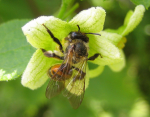
Europe’s wild bee population is declining dramatically. According to the first-ever assessment of all 1,965 wild bee species in Europe, 9.2% are threatened with extinction while another 5.2% are likely to be threatened in the near future. The study by the International Union for the Conservation of Nature (IUCN) was published last week as part of “The European Red List of Bees” and the “Status and Trends of European Pollinators “ (STEP) project, both funded by the European Commission. Jean-Christophe Vié, of the IUCN Global Species Programme, said the assessment offered the best understanding so far of wild bees in Europe, but knowledge was incomplete due to "an alarming lack of expertise and resources". For this reason, a total of 56.7% of wild bee species are classified as data deficient. The study found that 7.7% of the species have declining populations and 12.6% are stable while population trends for the remaining 79% are unknown. “Our quality of life – and our future – depends on the many services that nature provides for free,” says Karmenu Vella, the EU Commissioner for Environment. “Pollination is one of these services, so it is very worrying to learn that some of our top pollinators are at risk“. Of the main crops grown for human consumption in Europe, 84% depend on insect pollination, including many types of fruit, vegetables and nuts. Pollinators support crops accounting for 35% of global agricultural production volumes. Wild and domesticated bees play an essential role: The pollination services provided by bees alone are estimated to be worth €153 billion globally and €22 billion in Europe every year. The study shows bees are threatened by changing agricultural practices and increased farming intensification which have caused losses and degradation of their habitats. The experts say that important sources of food and forage for pollinators have been lost due to intensive silage production at the expense of hay-cropping, which led to the disappearance of herb-rich grasslands and season-long flowering. The widespread use of insecticides also harms wild bees and herbicides have reduced the availability of flowers on which they depend. Climate change has been another factor in the decline in bee populations, particularly in bumblebees. The report warns a total of 25.8% of Europe’s bumblebee species are threatened with extinction. The authors call for greater attention to bees in the management of protected areas and in agricultural policies in Europe. “We need far-reaching actions to help boost both wild and domesticated pollinator populations. Achieving this will bring huge benefits to wildlife, the countryside and food production,” says Simon Potts, STEP project Coordinator. (ab)
24.03.2015
Urgent need to make agricultural water use more sustainable, UN report

The world is projected to face a 40% global water deficit by 2030 unless we dramatically improve the management of this precious resource. This is the main message of the UN’s World Water Development Report 2015, launched on Friday two days before World Water Day. The planet has never been so thirsty: About 1.2 billion people live in areas where water is physically scarce and 748 million people do not have access to improved sources of drinking water. The water crisis is not one of resource availability, the report stressed. There is enough water to meet the world’s growing needs - but not without dramatically changing the way water is used, managed and shared. At least 50% of the global population uses groundwater resources to satisfy drinking water needs. Groundwater also accounts for 43% of all water used for irrigation. An estimated 20% of the world’s aquifers are being over-exploited, leading to serious consequences such as land subsidence and saltwater intrusion. The report predicts that, by 2050, global water demand will increase by 55%, mainly due to growing urbanisation, climate change and demand from agriculture. The agricultural sector accounts for 70% of global freshwater withdrawals, and more than 90% in some of the world’s poorest countries. According to the report, the intensive and often inefficient use of water for crop irrigation depletes aquifers, reduces river flows, degrades wildlife habitats and has caused salinisation of 20% of the irrigated land area. Water quality faces pressures from pollution through the release of pesticides and chemicals into watercourses and the lack of wastewater treatment in developing countries. Eutrophication of surface water and coastal zones are expected to increase almost everywhere until 2030. The number of lakes with harmful algal blooms will increase by at least 20% until 2050. To make water use more sustainable, agriculture must reduce water losses and increase water productivity (i.e. producing more crop or value per volume of water applied). The UN experts suggest that improvements in ‘crop per drop’ could be realised by adopting agro-ecological methods such as the System of Rice Intensification, which gives plants only the ideal amount of water and keeps the soil temporarily dry instead of continuously flooding rice fields. The report suggests a combination of more stringent regulation and well-targeted subsidies can help reduce water pollution. Water use efficiency could also be improved by rewarding farmers who use efficient irrigation methods. For example, in an arid country like Cyprus, subsidies have led to a major change in farmers’ attitudes towards irrigation techniques and the imposition of water-saving techniques. As the UN prepares to adopt the future Sustainable Development Goals for the time after 2015, the report points to the need to devote an entire goal to water. (ab)
19.03.2015
Middle income nations play key role in ending hunger and malnutrition

Close to half of the world’s hungry, or 363 million people, live in just five fast-growing, middle income countries: Brazil, China, India, Indonesia and Mexico. At the same time, the levels of overweight and obesity are rising in these countries. This is why we must also pay attention to those living in the “economic middle” as part of any strategy to effectively fight hunger and malnutrition worldwide, according to a new report released on Wednesday by the Washington-based International Food Policy Research Institute (IFPRI). The 2014–2015 Global Food Policy Report calls on the governments of these countries described as “economic powerhouses” to reshape their food systems to focus on nutrition and health, close the gender gap in agriculture and improve rural infrastructure to ensure food security for all. The report said there were both strong advances and stubborn setbacks in food and nutrition security in 2014. Some countries made progess in reducing poverty and the number of hungry people, while in other countries conflict, climate change and disease disrupted food production and took a heavy human toll. The number of food insecure people has increased in many Arab countries since 2011, especially in Syria, Iraq and Yemen. Extreme weather conditions and climate change threatened all regions of the world, from low rainfall in the Sahel to drought in Central America and natural disasters in Asia. IFPRI Director General Shenggen Fan wrote in a foreword to the report that smallholder farmers, who produce much of the food consumed in Asia and Africa south of the Sahara, remain most vulnerable to these types of shocks. However, IFPRI’s strategy for helping those farmers sounds quite uncompromising: “Small family farmers need to move up or move out”. First, it should be determined which farmers can be profitable. Public policy should then support small family farms in either ‘moving up’ to commercially oriented and profitable farming systems or ‘moving out’ of agriculture to seek urban and nonfarm employment opportunities. Shenggen Fan is optimistic about the future: “The year 2015 offers a rare chance to reshape the global development agenda through the Sustainable Development Goals. Food and nutrition security garnered much political attention in 2014. If this momentum can be leveraged into a post-2015 plan that includes holistic and comprehensive food and nutrition investments, policies, and programs, the international community may soon have a chance to end hunger and malnutrition once and for all“, Fan concludes in his outlook. (ab)
17.03.2015
EU imports drive illegal deforestation, new report finds

The EU is one of the largest importers of commodities stemming from illegally deforested land, according to a new report published today by Brussels-based environmental group Fern: between 2000 and 2012, forests the size of a football field were illegally cleared every two minutes to supply European consumers with beef, soybeans, leather and palm oil. In 2012, the EU imported 6 billion euros worth of these products linked to illegal deforestation - almost a quarter of the total world trade, the report reveals. Around 25% of all soy, 18% of palm oil, 15% of beef and 31% of all leather produced on land illegally cleared of forest is destined for the EU. “It is well documented that the EU has been leading the world in imports of products which drive deforestation, but this is the first time that we have data showing that much of this deforestation is also illegal”, said Saskia Ozinga, Campaigns Coordinator at Fern. The Netherlands, Italy, Germany, France and the UK are the main destination countries. While the Netherlands and Germany are the main importers of palm oil, the UK is by far the largest consumer of beef from illegal deforestation. Most of the products originate in Brazil and Indonesia, where 90% and 80% of deforestation respectively is thought to be illegal, Fern said. Soy and cattle are also the main drivers of deforestation in Argentina, Bolivia and Paraguay. The Fern campaigners are calling on the EU to take action to halt illegal deforestation by addressing its current trade and consumption patterns in agricultural commodities. Demand for forest-risk commodities is being driven by a number of different EU policies, such as agriculture, trade and energy policy, Ozinga explains. "We urgently need an Action Plan to make these different policies coherent, reduce EU consumption and ensure we only import legal and sustainably produced commodities." (ab)
